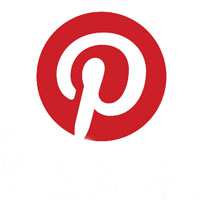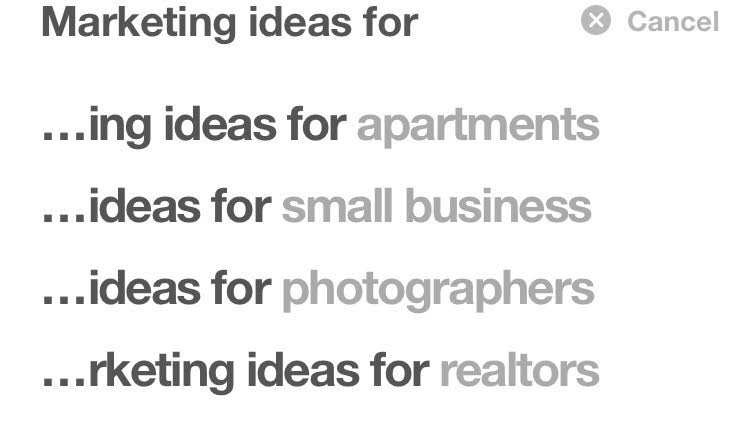Pinterest Visibility Strategies for Pins & Profiles

Pinterest is more than an app - it has taken on a life of its own as a verb, a way of life, a source of pride and, for the least crafty or creative among us, shame...
- Pinterest it
- Pinterest worthy
- Pinterest perfect
- Pinterest fail
- Pinterest hack
- Pinterest pressure
Since Pinterest reports that 97 percent of its top searches last year were non-branded, however, the network provides an excellent opportunity to get in front of new buyers actively seeking products and projects - if a company knows how to increase their visibility through organic efforts. Let's explore some of those strategies to optimize for Pinterest search.
Include multiple products, items, elements in vertical photos
When it comes to finding ideas on Pinterest, users are no longer isolated to the network's search box, which should motivate businesses to re-consider the photos they are uploading to the network.
For starters, Pinterest has hired Randy Keller as head of search. Keller comes from Google where he was responsible for image search ranking and features - expertise that will no doubt help the image-based network with its recent beta launch of Pinterest Lens, which allows users to take a photo with their mobile device to search for ideas using objects they see out in the real world. Such use cases include pointing Lens at a pair of shoes to see related styles, pointing Lens at a table to see related styles or pointing Lens at a food item to get recipes containing the ingredient.
Looking forward, one has to imagine that Lens lays the groundwork for some sort of augmented reality function within Pinterest where a person could take a photo of their stark office space, for instance, and Pinterest will surface ideas of how to decorate or furnish it based on Pins within Pinterest that, perhaps, project to the real-world space.
For now, brands need to be aware that if Pinterest is analyzing camera photos to deliver relevant results, then the static photos within Pins hold weight as well. Here's some quick image advice:
- Include high-quality, original images that contain multiple products, items or elements that tell the story of the Pin (preferably on a white background and presented vertically - as advice for Promoted Pins recommend a minimum width of 600 pixels with a height between 900 pixels and 2100 pixels).
- Pinterest says that Pins with multiple products drive traffic because they speak to different tastes and stimulate curiosity. It's best to limit each Pin to four products so the Pin doesn't get too busy.
- Pinterest also recommends using real-life settings and models to show how your product or service can be used. For example, if you sell apparel or accessories, feature your products on a model as recommended by Pinterest.
- Add tasteful branding and/or a text overlay to photos so that when they are repinned (increasing visibility), the brand messaging remains with it.
Be generous with keyword usage
If image detection whispers what a photo contains to Pinterest, then Pin descriptions scream it. Pinterest recommends making sure the description invites Pinners to learn more about your business. Descriptions should mention the most compelling aspects of your Pin and hint that there is more to discover on your website. You should also include a strong call to action, using words like 'shop,' 'make,' 'find' or 'buy.'
As for which keywords to use, remember that the majority of searches are non-branded so your company name will likely do little to increase the visibility of your pins. With the keywords, explain the pin naturally and use Pinterest's own search bar to see what people are searching for as it relates to your product or service (as it will predict a search as a person types and if Pinterest's predictive search works like Google's, those searches will factor in popular queries).
Publish Pins very early
If you're a retail brand publishing Pins in November for holiday gift ideas, entertaining concepts, decorating items or anything else seasonal, you're already too late to increase the visibility of your campaigns. For the winter holidays, Pinterest users start planning four weeks earlier than the general population, according to the network, so it's wise to "promote deals early for them to save and reference as they're shopping." The same goes for every other seasonal event.
According to Pinterest, 45 percent of Pinners begin planning for holidays at least 60-days out (that's 21 percent higher than the general population), so think Fourth of July in May, Back to School in June, Halloween in July, Thanksgiving in August, Christmas and Hanukkah in September. Wait too long, and visibility will suffer.
Get rich
Pinterest is great for exploring ideas and imagining possibilities, but Pins are just theories if a person doesn't follow a conversion path. We know that Pinterest shoppers tend to spend two times more than the general public, so it's wise to provide them with all the details they need to buy. Plus, similar to optimizing a site for Google, the more "rich" information that a business provides Pinterest, the more likely it is to deliver that content to end-users. Rich Pins are a way to include additional information within a Pin. Rich Pins work for a variety of conversion types: app downloads, reading lists, purchases, click throughs for recipes.
All it takes is a line of code on a website and a quick application to get started with Rich Pins, which are especially useful for retailers as Product Pins include real-time pricing, availability and where to buy - even notifying users with price drops to get them to convert.
Keep asking for followers
Brands may take it for granted that their current or potential customers know that they are on Pin but that would be a mistake to assume consumers will find the brand on their own. Even in 2017, it's wise to ask people to follow a brand on social. Even though organic reach is low on most networks, a person indicating they want to receive updates from a business, still holds weight across networks.
Be clear with Board titles
It's tempting to be clever with what a brand titles their Boards on Pinterest, but companies should keep Pinterest algorithms in mind in order to help the network understand what the board contains. With Pinterest's Smart Feed, for example, incoming Pins are obtained from three separate sources: repins made by followed users, related Pins and Pins from followed interests.
Since Pinterest explores different signals from its content, some human readable (e.g., board titles) and some not (e.g., embedding vectors for Pins, boards and Pinners), it's better to be perfectly clear about what a board contains (e.g., Oscar Dresses from 2017 vs. Fashion from the Big Screen's Biggest Night). Machine learning helps Pinterest recognize nuances, synonyms and other elements of speech, but it's better to assist Pinterest in understanding meaning.
Consider your image files
Image458588w8884848.png doesn't tell Pinterest anything about the image being uploaded. Pinterest is leveraging every source it has to provide relevant, personalized results to end-users, so consider adding keywords and interests as the file name before uploading an image, such as valentines-day-gift-idea-for-kids-food.png or back-to-school-shopping-idea-for-first-graders.png.
Access your analytics
As Pinterest grew, so did its business users, which required the network to revamp its analytics offerings. Today, brands can use the analytics within Pinterest to access profile and audience analytics, user country and metro segmentation, app segmentation, more comprehensive event types (such as impressions, clicks, and repins), and Pin It button analysis for the off-network and on-network usage. By posting Pins that are relevant to an audience's interests or revisiting already-popular Pins, brands have a better chance of increasing their visibility on the network because their Pins will align with a follower's interests, which is a ranking signal in Pinterest's Smart Feed.
Think of Pinterest as a search engine
To increase the visibility of Pins and profiles on Pinterest, brands have to begin go think of Pinterest as a complex search engine looking for clues about what the content means and how it will be relevant to a person and how that person's experience will pan out. Like Google, Pinterest wants to avoid surfacing spammy and poor-quality results, so brands must think about the Pinterest experience they are offering and the post-click experience they are providing in order to "rank" on the network.

Subscribe to Our Newsletter!
Latest in Social Media











